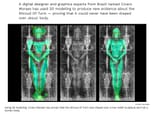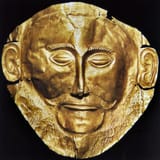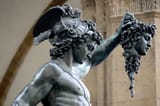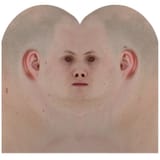Anonymous
8/7/2025, 11:13:34 AM
No.17903357
>>17903362
>>17903384
>>17903419
>>17903422
>>17903435
>>17903458
>>17903558
>>17903563
>>17903569
>>17903637
>>17903640
>>17903668
>>17904011
>>17905100
>>17905794
>>17907113
>>17907145
TURIN SHROUD BTFO
> New research has used 3D image analysis to suggest that the Shroud of Turin was likely not laid atop Jesus’ body, but only a sculpture instead.
> For centuries, many have claimed that the Shroud of Turin was Jesus’ original burial covering. However, this new evidence about the Shroud of Turin shows that the image on the shroud could not have been made by a real human body, and was actually likely created by a low-relief sculpture.
> Researcher Cícero Moraes used 3D modeling software to study how the fabric would have fallen over a human body versus a sculpture to make his conclusions. Moreover, those conclusions support the theory that the shroud was created in medieval times as a piece of religious artwork and is not an actual Biblical artifact.
> Moraes created two different 3D models: one of a human body and one of a low-relief sculpture of a human body, or a sculpture in which the design is raised only slightly from its base. He then virtually draped the cloth over the impressions to compare the images with photos of the shroud from 1931.
> He found that the images of the cloth over the sculpture matched the photographs. Meanwhile, the images of the cloth over the human body tended to get distorted in ways that don’t match the photos.
> For centuries, many have claimed that the Shroud of Turin was Jesus’ original burial covering. However, this new evidence about the Shroud of Turin shows that the image on the shroud could not have been made by a real human body, and was actually likely created by a low-relief sculpture.
> Researcher Cícero Moraes used 3D modeling software to study how the fabric would have fallen over a human body versus a sculpture to make his conclusions. Moreover, those conclusions support the theory that the shroud was created in medieval times as a piece of religious artwork and is not an actual Biblical artifact.
> Moraes created two different 3D models: one of a human body and one of a low-relief sculpture of a human body, or a sculpture in which the design is raised only slightly from its base. He then virtually draped the cloth over the impressions to compare the images with photos of the shroud from 1931.
> He found that the images of the cloth over the sculpture matched the photographs. Meanwhile, the images of the cloth over the human body tended to get distorted in ways that don’t match the photos.











